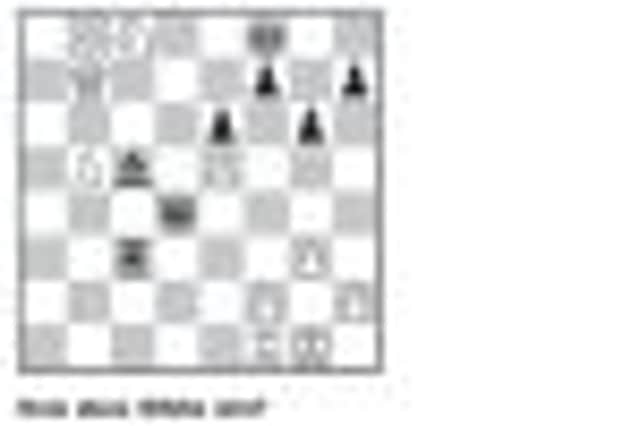Chess - The Scotsman 09/05/2012


How does White win?
ALBERTO KORDA’S photo of Marxist revolutionary Che Guevara became an iconic poster that through the 1970s seemed to appear on the walls of student bedsits more dependably than rising damp. It was taken in 1960, in Havana, just a year after the Cuban Revolution.
Che was also an avid chess player and driving force behind many chess initiatives in Cuba, most famously bringing the Chess Olympiad to Havana in 1966. As a minister, he initiated a permanent memorial to Cuba’s favourite chess son José Raúl Capablanca, world champion from 1921 to 1927. In 1962, as Che addressed the inaugural Capablanca Memorial opening ceremony, he commented that many grandmasters would emerge from Cuba as a result of the revolution’s work. His prophecy only came true after his assassination, though, as Guillermo Garcia, Silvio Garcia and then Amador Rodriguez became the first grandmasters of the revolutionary era.
Advertisement
Hide AdAdvertisement
Hide AdOf all the Cuban grandmasters, the strongest has to be their current No 1 Leinier Dominguez. Dominguez got off to a sparkling start to the 47th Capablanca Memorial as he shares the early lead on 2/3 alongside five-time defending champion Vassily Ivanchuk of Ukraine.
The field for the six-player double round robin also includes Ian Nepomniachtchi (Russia), Viktor Laznicka (Czech Rep.), Vladimir Potkin (Russia) and Yuniesky Quesada Perez (Cuba).
L Dominguez - V Laznicka
47th Capablanca Memorial, (1)
Caro-Kann Defence, Advanced variation
1 e4 c6 2 d4 d5 3 e5 Bf5 4 Nf3 e6 5 Be2 c5 6 Be3 cxd4 7 Nxd4 Ne7 8 Nd2 Nbc6 9 N2f3 Bg4 10 0–0 Bxf3 11 Nxf3 Qc7 12 c4 dxc4 13 Bxc4 Nf5 14 Qe2 Nxe3 15 Qxe3 Be7 16 Bd3 0–0 17 Be4 Rfd8 18 Rac1 g6 19 Rc2 Qa5 20 Bxc6 bxc6 21 Rxc6 Rac8 22 Rxc8 Rxc8 23 a3 Rc2 24 b4 Qa4 25 Qe4 Rc3 26 Qb7 Kf8 27 Nd4 Rxa3 28 Nc6 Bg5 29 g3 Rc3 30 Nxa7 Be7 31 b5 Bc5 32 Nc8 Qd4 33 Nd6! Bxd6 34 exd6 Qxd6 35 Rb1 Qd3 36 Qa8+ Ke7 37 Qa7+ Ke8 38 Qa1 Rb3 39 Rd1 Qxb5 40 Qh8+ 1–0